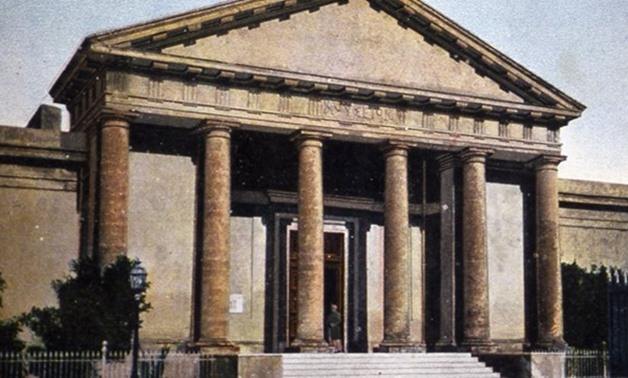 Greco-Roman Museum in Alexandria is expected to open end of 2020 - ET
Greco-Roman Museum in Alexandria is expected to open end of 2020 - ET Greco-Roman Museum to officially open end of 2020
By: Mustafa Marie
Tue, Jun. 23, 2020
CAIRO – 23 June 2020: Mona Hagag, professor of Greco-Roman Antiquities and president of the Antiquities Association in Alexandria, said that the Greco-Roman Museum is expected to open at the end of 2020.
The museum is 100 percent complete on the constructional level, and will house 50,000 new artifacts.
Hagag said to the press that she will attend the Supreme Committee of Museums on June 26 to give her archaeological advice on matters related to the museum, adding that the committee will visit the museum's site to inspect the latest developments. Hagag noted that the company that undertakes the construction process is keen to consult the archaeologists about setting antiquities and lighting.
Hagag explained that the display of old and new artifacts is underway through an unprecedented presentation scenario called "objective presentation" and that the old exhibiting scenario was in the form of groups according to the historical chronology or the material of the monument itself, stone or pottery.
On the objective view, Hagag revealed that the exhibition will reflect aspects of Egyptian history through various approaches, so that the pieces that reflect the political aspects, for example, are displayed away from the ones reflecting economic and commercial activities.
She pointed out that this method is impressive because it enables the ordinary visitor to imagine the ancient Egyptian society, portraying the conditions of life in the ancient Egyptian era.
Furthermore, Hagag highlighted that 50,000 new artifacts will be added to the old artifacts, in addition to the huge quantities of currencies that need an independent exhibition, adding that the museum is 100 percent complete on the constructional level, with the interior finishes and fixtures being underway.
According to Hagag, the museum was established in 1892, and its establishment coincided with a modern urban movement that uncovered artifacts taken by foreigners; hence came the idea of creating a museum to preserve artifacts discovered in Alexandria and the Delta. Within a short time, the museum was filled with artifacts and became one of the most important museums.
Hagag said that the museum goers were Mediterranean scholars, not just the people of Alexandria, stressing the importance of the museum's scientific, cultural and historical status.
She added that the museum was restored in 1984, and that most pieces were stored, noting that at the beginning of the 2000s, the building suffered clear cracks, and Zahi Hawass issued a decision to close the museum and launch a project to develop it.
"Unfortunately, mechanisms of the museum's development were not available at the time, upsetting not only the Alexandrian community, but for researchers and archaeologists around the world," Hagag concluded.
-- Sent from my Linux system.
No comments:
Post a Comment